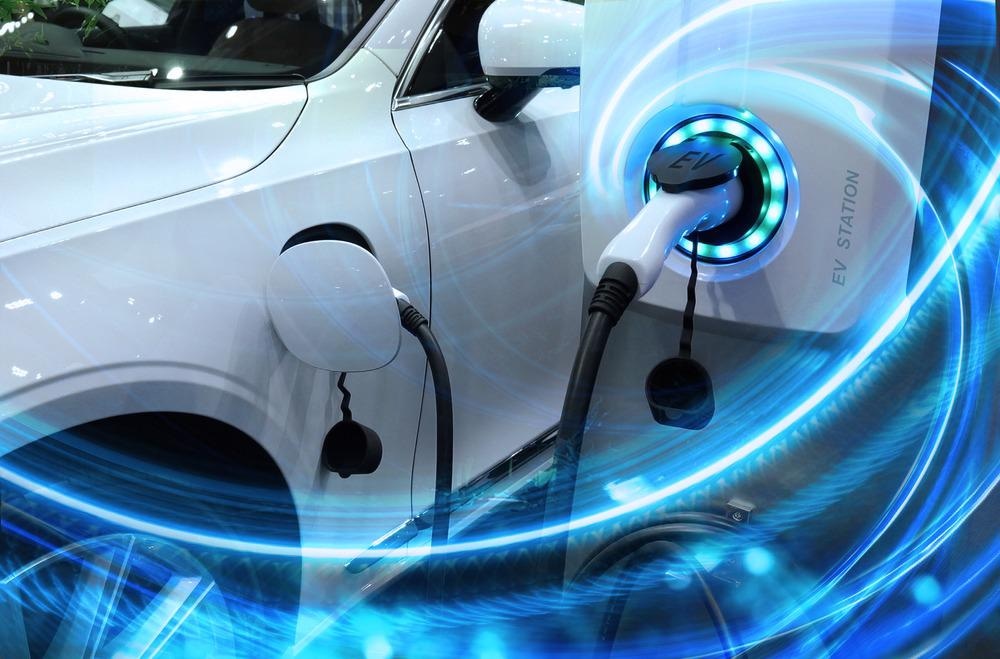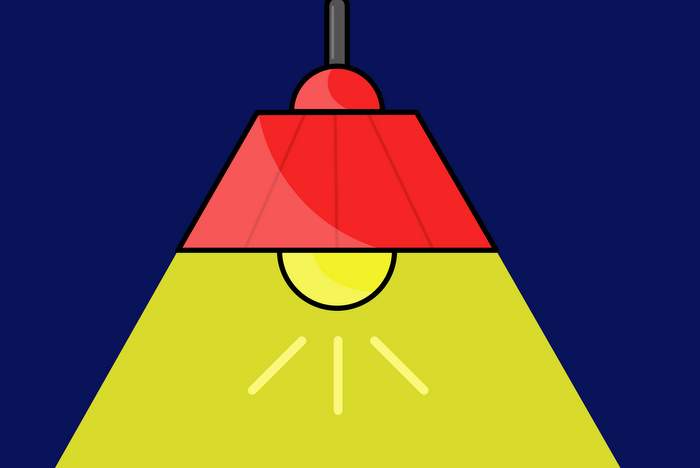We’re using our home appliances wrong. Some energy-saving tips are myths – The Washington Post
Energy Disrupter
Luckily for me, this day will never come. I’ve been rescued by LED lights, now the primary lighting source for about half of U.S. homes. LEDs are wafers of semiconducting material that emit as much light as incandescent bulbs while using about 10 percent of the electricity. Later this year, incandescent bulbs will disappear from store shelves for good as new federal efficiency standards take effect. If it isn’t already, your home lighting will soon be a rounding error on your energy budget.
Yet many people still sound like my dad. When you ask Americans how they save energy at home, “turn off the lights” has been at the top of the list since the 1980s. But when it comes to actual savings, it doesn’t even crack the top 10. Like most conventional wisdom about how to reduce household energy and emissions, much of what we believe about our homes and appliances is wrong.
It’s time to update our thinking.
Lights out for old appliances
I interviewed engineers, energy efficiency experts and appliance manufacturers across the country to find out how we’re misusing our appliances. The story begins in the mid-1970s when states, led by California, imposed appliance efficiency standards in response to the energy crisis. States and then Congress began to tighten standards on more than 50 products, and introduced the federal Energy Star program, a successful voluntary certification by the Environmental Protection Agency to label energy-efficient products.
At first, many manufacturers resisted. Some even cheated: Refrigerators sold by South Korean company LG in 2010 deployed a circumvention device to fool efficiency tests. But manufacturers have come around to the new standards, even competing under the Energy Star program to promote their efficiency bona fides.
The efficiency standards have also proved politically durable. After the Trump administration attempted to allow certain modelsof dishwashers, washing machines and shower heads to use unlimited energy and water, the Biden administration reversed those measures and imposed even stricter ones. Efficiency efforts like these have shaved $500 off the average household’s annual utility bill, and about 7 percent off projected U.S. energy consumption, estimates the Appliance Standards Awareness Project.
“If automobiles were regulated to the same extent as household appliances, the average vehicle would be getting 60 miles per gallon and seat nine people,” says Pamela Klyn, an engineer and sustainability executive at Whirlpool, which manufactures 20 million products every year under brands including Whirlpool, Maytag and KitchenAid. Yet these appliances could be saving us even more water, energy and time — if we used them properly.
Luckily, efficiency gains have simplified our choices, says Joseph Kantenbacher, an environmental researcher at the University of South Dakota. “It’s been a mistake to try to get everyone to do everything,” says Kantenbacher. “No one has time for that.”
Kantenbacher offered a few guidelines. First, ditch old assumptions (and ancient appliances). We often think noisy or large appliances are the most wasteful, yet the opposite is often true. On average, the most efficient modern refrigerators use less energy per hour than an old 60-watt incandescent lightbulb. Instead, focus on the half of your home energy that goes to heating or cooling your living spaces and the other 20 percent that runs appliances that pump and heat water, such as dishwashers and water heaters. Then focus on the rest.
Here’s a list of the most common ways we’re misusing our appliances, and what we can do better. None, fortunately, rely on your children to remember to turn off the lights. Sorry, Dad.
Don’t pre-rinse. Run your dishwasher.
It’s time to forget what your parents taught you about cleaning up after dinner, says Jennifer Amann, who helps lead the buildings programs at the American Council for an Energy-Efficient Economy. The dishwasher has come a long way over the past century.
“One of the hardest habits for me to break, growing up in the 1970s and 1980s, was not to fully rinse off dishes,” says Amann. “My mom’s dishes were clean by the time they got into the dishwasher. Washers nowadays can perform like miracles, they use so little water.”
How little? Three-and-a-half gallons or less. The most efficient dishwashers now use close to 2 gallons to clean a load of unrinsed plates. Modern dishwashers are designed to remove dried food on plates, allowing you to wait until the machine is full to run it. Scraping is enough. Just leave room for water sprayers to reach every dish.
What if you only have a few dishes to wash? You might think doing them by hand is less wasteful, but that’s not what research shows, even if you run a half-empty dishwasher, according to Gregory Keoleian, the director of the University of Michigan’s Center for Sustainable Systems.
Keoleian co-authored a study investigating how much water and energy it takes to wash dishes by hand or machine. The peer-reviewed study, sponsored by Whirlpool, found that running the tap to wash a single place setting (a plate, cup, bowl, utensils and some serving dishes) consumes about 3 gallons. That means running the dishwasher for just two people saves water compared to washing dishes in the sink, assuming you’re not pre-rinsing. On average, dishwashers also yield less than half the greenhouse gas emissions as washing dishes by hand, mostly thanks to heating less water.
At capacity (about eight sets of dishes), a dishwasher uses less than half a gallon per place setting. “Households using machine dishwashers can lower their carbon footprint by scraping dishes rather than heavy rinsing before loading, running full loads, using ‘normal’ wash setting, not using heated drying, and purchasing an efficient dishwasher,” Keoleian writes in an email.
The only way to beat this by hand is by using a two-basin method to wash and rinse, rather than letting the water run as most people do. But it won’t save you time. Hand-washing a household’s dishes for a year, the EPA estimates, consumes about 230 hours, equivalent to a 10-day vacation.
How do the appliances do it? Light sensors in dishwashers detect the cloudiness of water as it drains and adjust the water to ensure the dishes are clean without wasting any. “The whole point is that the appliances do the hard work for you,” says Cara Acker, a spokesperson for Bosch home appliances, a major manufacturer.
Set your refrigerator thermostat and forget it
The refrigerator was once the “most energy-thirsty appliance in the family home.” Today, it is one of the thriftiest. Since 1972, refrigerators’ energy use has decreased by three-fourths, even as their interior volume has expanded, according to a 2010 World Economic Forum study. Thanks to improved compressors, coolants and insulation, those numbers look even better today.
Yet many people still ignore manufacturer recommendations and set the temperatures too cold. “Colder isn’t necessarily better,” says Acker. Decades of improvement in insulation, air seals and airflow mean recommended temperatures — usually between 37 and 40 degrees Fahrenheit — preserve food the longest without wasted energy or frostbite. Just arrange your food so it’s easy to find and hard to forget (wasted food remains a major source of emissions).
The biggest mistake, however, is keeping fridges past their expiration dates. If you have an old model in a (hot) garage or basement — especially if you’re part of the 26 percent of U.S. households with a second refrigerator — ditch it. In most cases, you’re paying more for electricity than you’d save by upgrading. Payback periods can be as short as a few years, and utilities will even pay you for the clunkers (you can find programs that do that here).
Get a smart thermostat
You might have heard that keeping your thermostat at one temperature saves on heating and cooling bills. It doesn’t. By installing programmable or smart thermostats that learn your preferences and habits, households can set an efficient heating and cooling schedule, while saving $50 to $100 a year, according to Energy Star. The devices, available for about $150 (or free with rebates), generally use home WiFi, smartphone apps or motion sensors to know when people are home, then adjust temperatures accordingly, as well as throughout the day.
Homes with heat pumps are an exception, says Iain Walker, who studies buildings at the Lawrence Berkeley National Laboratory. Modern high-performance heat pumps work best when maintaining a constant comfortable temperature and can be less efficient if trying to warm a cold home. They can deliver energy savings without thermostat adjustments in the evening or when you wake up. “Don’t touch the thermostat,” says Walker. “Just leave it at 68 or 70.”
Stop washing clothes in hot water
Washing machines once filled a tub with hot soapy water, dragged your clothes around for an hour or so and then drained. Today’s front-loading machines reverse this dynamic: They use a small pool of water to rinse your clothes, then constantly check the water clarity to get the job done using just the right amount of heat and water. Since 1990, this method has cut energy and water use by more than half.
Still, we operate our machines like the tubs of yore. The main change to make is to wash on cold. With few exceptions, modern laundry detergents work just as well at cold temperatures (even when not marked as cold-water formulations). Most washing machines’ built-in sensors ensure clothes get just as clean without extra water or heat. Two other settings maximize those savings: Quick cycles get the average load just as clean, and higher spin settings shorten drying times. For exceptionally dirty laundry, dial up the settings. Don’t make it the norm.
Don’t save ancient appliances. Replace them.
If you’re using a 15- or 20-year-old machine, replacing it will almost certainly save cash — and emissions. Even today’s inexpensive dishwashers are more efficient than top-of-the-line appliances a decade ago. Pushing appliances well beyond their expected lifetime just delays their imminent replacement while burning cash and energy.
But, manufacturers argue, we may be entering an era when appliances approach their maximum efficiency. At that point, we will rely more on software updates than new hardware to improve them. “Appliances are becoming about as efficient as they can be,” says Klyn, the Whirlpool executive. “It will get to the point where we’re better off helping consumers prolong the life of their product.”
That day remains a long way off, counters Andrew deLaski, executive director of the Appliance Standards Awareness Project. Companies have successfully fought to delay new standards by lobbying the Energy Department. The agency recently settled a lawsuit after missing deadlines to update standards for 20 appliances.
Manufacturers have often argued such new requirements aren’t feasible, only to achieve dramatic efficiency improvements once they are implemented. Whirlpool told the Energy Department in 2009, for example, that its best top-loading clothes washers were “at (or very near) the maximum technologically feasible limit for top loaders.”
Today, Whirlpool’s most efficient top-loader is 50 percent more energy efficient than those earlier models. “Manufacturers say we can’t meet these efficiency levels. It’s impossible,” says deLaski. “But those products are on the market today.”
















